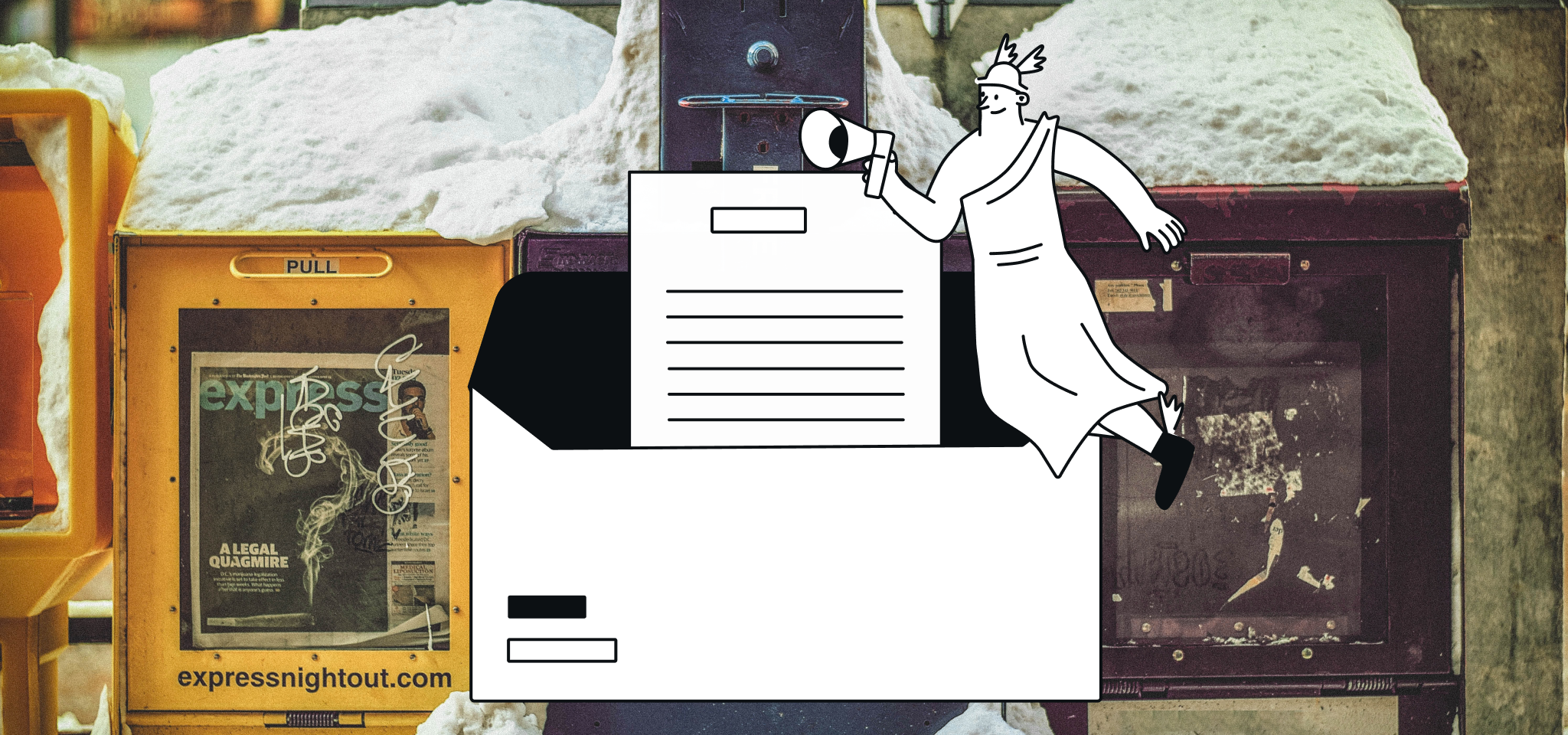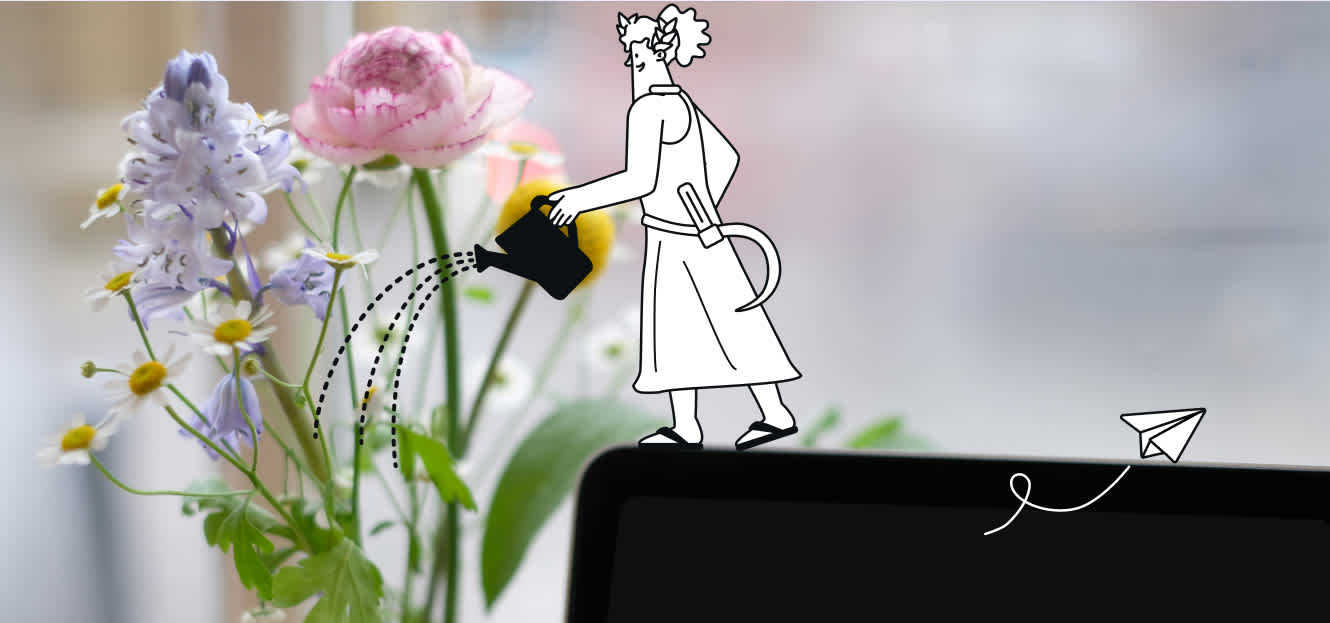Email best practices
The Buzzfeed guide to sending irresistible email
As an email marketer, there’s a lot you can learn from the success of Buzzfeed and their newsletters.
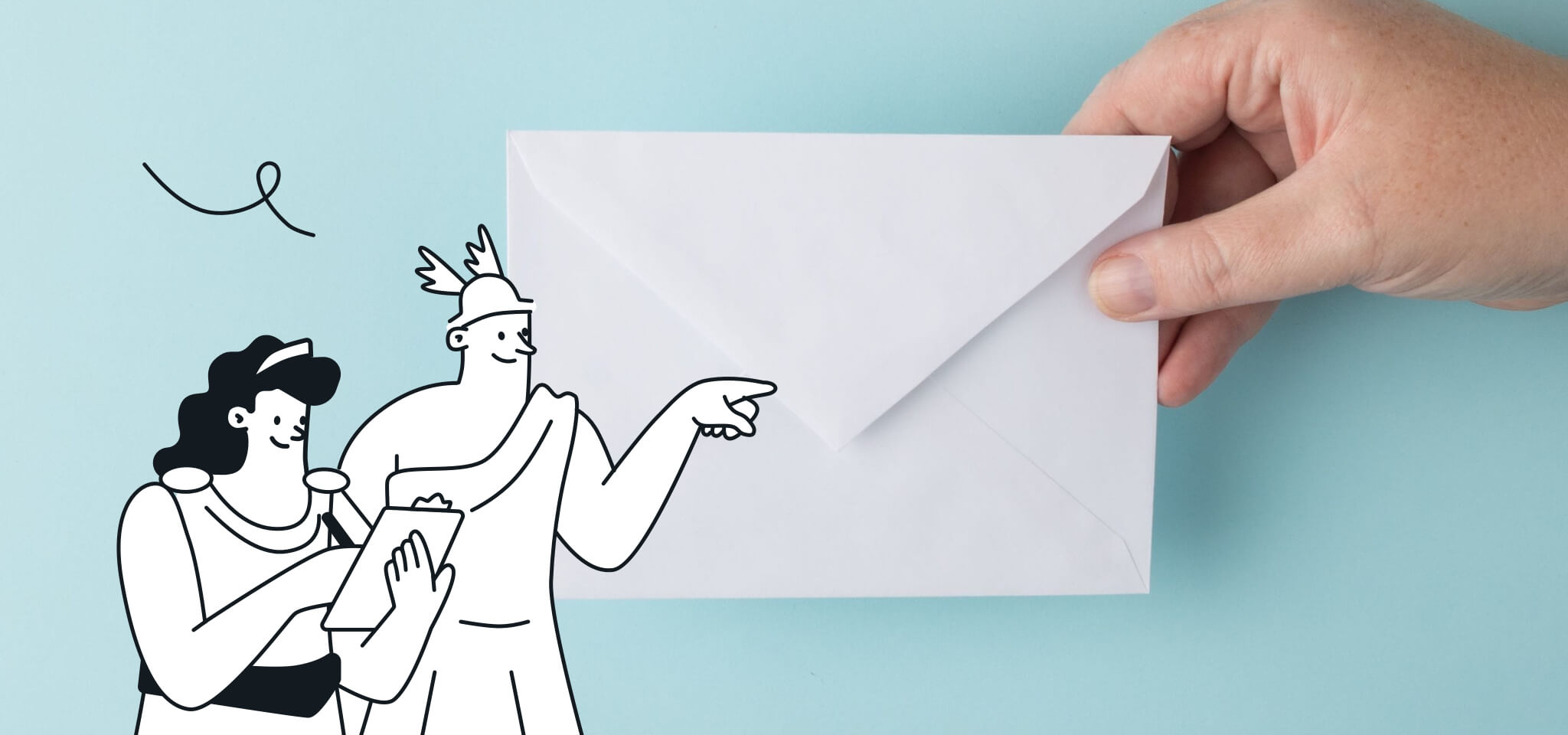
PUBLISHED ON
Has this ever happened to you?
You sit down to write an email campaign that’s supposed to go out by the end of the day. But before you fire up your email software, you take a quick peek to see if you’re missing anything interesting on Facebook — you know, just in case.
Just as you’re about to give up and get back to that email, you see something that stops you dead in your tracks.
It’s a Buzzfeed article — with a headline and an image so captivating you just can’t resist.
Here’s the dilemma.
If you click, you’ll get sucked into a binge-reading marathon and before you know it — the day will be half over.
But if you don’t click, you won’t get any work done anyways because you’ll be too distracted wondering what Donald Trump looked like dressed like a farmer singing “Green Acres”.
You wouldn’t be the first person who’s fallen victim to Buzzfeed irresistible propositions. Millions of people have had countless stolen from them much the same way.
Makes you wonder, how do they do it?
What Buzzfeed can teach you about email marketing
Email is probably the last thing that comes to mind when you think about Buzzfeed.
After all, their rise from ‘that site with the cat memes’ to one of the internet’s most powerful media publications was built largely on the back of the social share — not the inbox.
But Buzzfeed has doubled down on its email marketing strategy in the last few years. While they don’t publish their subscriber numbers — we do know that email is one of Buzzfeed’s top sources of traffic right alongside Facebook, Twitter, Google, and Pinterest.
As an email marketer, there’s a lot you can learn from the success of Buzzfeed’s newsletters. Here are 3 simple lessons you can put to work immediately:
1. Be focused
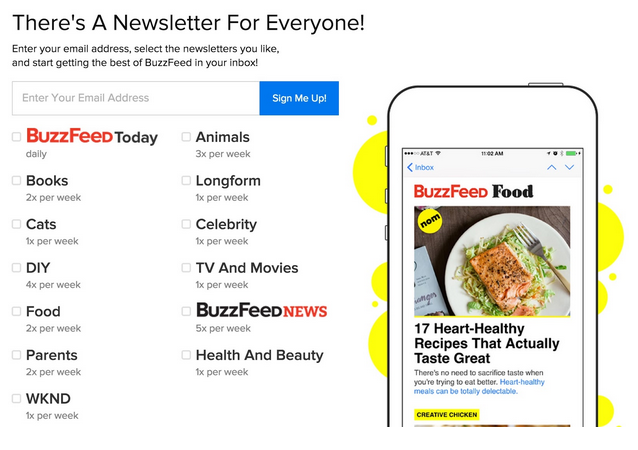
Buzzfeed’s readers are a diverse bunch. Cat lovers, food lovers, celebrity gossip lovers — you name it.
When they initially launched their email newsletter, it was just a general purpose list that showcased the site’s most popular content — now known as Buzzfeed Today.
But since then, they’ve added a growing list of niche newsletters that target the ultra-specific interests of their readers.
“As we've launched these niche newsletters, their growth has been really strong. The open and click rates are outstanding because it's for audiences that really specifically care about that vertical.” — Dan Oshinsky, Buzzfeed Newsletter Editor
As of today, Buzzfeed's opt in page features 13 email newsletters that tackle everything from celebrity gossip to recipes — and even a ‘dog-a-day’ newsletter which sends a picture of an adorable dog to your inbox every morning (thereby challenging the very definition of a newsletter).
By drilling down to the specific interests of their readers, Buzzfeed is able to set crystal clear expectations on what subscribers will receive and then deliver on those expectations every single time.
Do you need to create 13 email newsletters to achieve the same results? Not at all.
The lesson here is to stay laser focused on what subscribers want to hear from you. The moment you veer away from your focus is when subscribers start asking themselves, “why am I on this list again?”
2. Be engaging
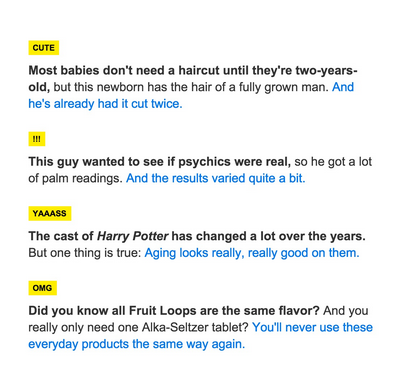
Buzzfeed has one simple goal: to publish stories you’ll love enough to share. Everything else is secondary.
You’ll notice a bias towards engagement in almost everything Buzzfeed does — the way they select their stories, the way they write their headlines, and even the way their emails are formatted.
But Buzzfeed has a massive editorial team dedicated to sourcing and writing engaging stories. How can you possibly achieve the same levels of engagement with your subscribers?
Give them what they want.
Why do people join your list? What are they looking for? How does it fit into their day?
Most importantly, what emotional benefits are they seeking through your email?
“When you're having a rough day at work and see '13 Simple Steps To Get You Through A Rough Day', that's servicing an emotional need: look at this hedgehog wearing a tiny hat -- you feel better, you share it with your friends." — Jonah Peretti, Buzzfeed Founder
With every piece, Buzzfeed is deliberately targeting an emotional need that not only gets your attention, but also satisfies that need enough to get you to share the feeling with others.
They know you’re looking for a pick me up when you click to see the 21 Pictures That Will Restore Your Faith in Humanity.
They know you’re looking looking for a break from the grind when you check out The 25 Most Awkward Cat Sleeping Positions.
They know you want to sound smart and funny in front of your friends when you read 18 Things Donald Trump Has 100% Actually Said.
Put yourself in your reader’s shoes. What do they really want to see? What would make them look forward to opening your email? Once you know that, you’ll have all you need to achieve Buzzfeed levels of engagement.
3. Be curious

What’s the secret behind those irresistible headlines?
It’s almost frustrating how Buzzfeed manages to get you to click on their articles. You can’t help but feel like you’re being manipulated by some evil headline writing genius.
Evil or not, Buzzfeed headlines work because they evoke an overwhelming sense of curiosity.
The fear of missing out (FoMO) is a real psychological phenomenon. It’s most commonly understood as the apprehension or angst you feel when you see pictures of your friends having fun on Facebook or Instagram -- which can even lead to depression.
But FoMO also rears its ugly head when you’re confronted with an irresistibly curious headline that gets the better of you. In this case, it’s not the fear of your friends having fun without you, it’s the fear of not knowing how to get an 86% bigger burrito at Chipotle without paying an extra dime.
The headlines are only half the story though.
A FoMO inducing headline that doesn’t follow through on the information it promises to deliver is the definition of clickbait — and Buzzfeed doesn’t do clickbait.
“Most clickbait is disappointing because it’s a promise of value that isn’t met — the payoff isn’t nearly as good as what the reader imagines, [...] BuzzFeed headlines pay off particularly well because they actually make fairly small promises and then over deliver, [...] It’s validating, which is maybe the most valuable payoff of them all.” — Nilay Patel, The Verge
When Buzzfeed promises the 21 Best Moments from the Golden Globe Awards — you’re getting the best moments. And every time they come through on their promise, you’re more to open their next email.
Just for fun, here’s a handy Buzzfeed-style headline generator for when you just can’t come up with a subject line: http://www.ravi.io/buzzfeed-title-generator
Is your email as irresistible as Buzzfeed’s?
“What’s exciting about email is, people invite you into this space and you get an opportunity to make a good first impression, [...] The downside is, if your emails are not good, you’re in a pretty important space and people kick you out.” — Dan Oshinsky
Tomorrow morning, when your subscribers open up their inbox to find an email from Buzzfeed and another from you, which one will get their attention?
You might not see yourself as Buzzfeed’s competitor. But in the battle for the inbox — one of the fiercest battles of all — you’re competing with Buzzfeed.
***
This blog post was written by Ahmad Munawar, a marketer and copywriter who helps brands craft email campaigns that boost engagement and drive revenue. He’s also a Certified Content Marketer with Copyblogger Media. Join his once-a-month newsletter for email marketers at hitsend.co -- and say hello on Twitter @aamunawar.



